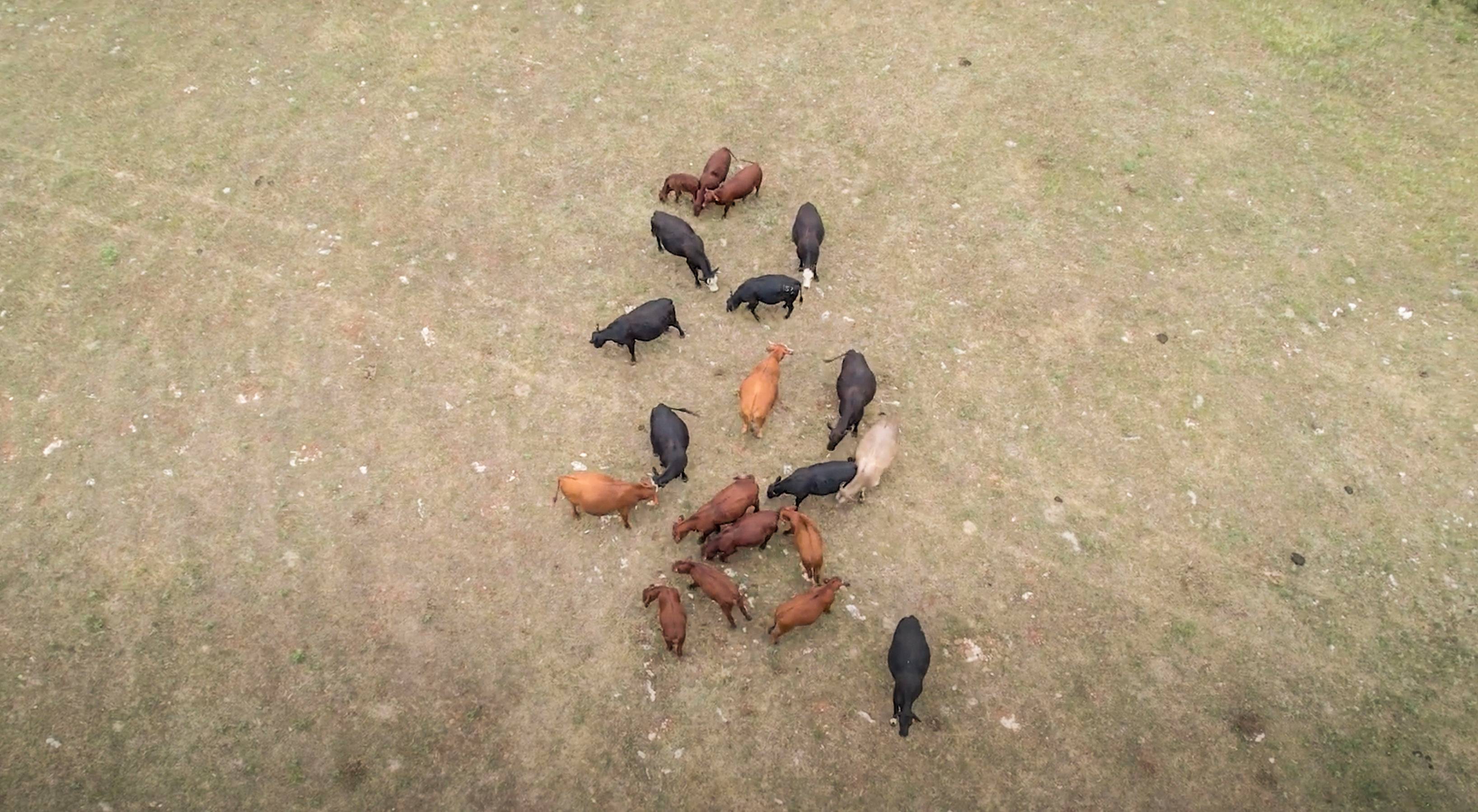There’s a good chance you’ll see more cows than humans when you first arrive at Texas State University’s Freeman Center. Stretching across 3,500 acres just outside San Marcos, the ranch serves as a one-of-a-kind field laboratory where faculty and students tackle research projects that need wide-open space—and sometimes a few curious cattle.
Talking ’Bout Regeneration
In this collection of stories, we explore how Texas State’s Freeman Center is enhancing soil and water health through research and hands-on education in regenerative agriculture.
The Freeman Center has been part of TXST since the 1980s, when San Antonio businessman Harry Freeman donated the ranch for educational and experimental purposes. Freeman’s gift was both generous and prescient. As Central Texas’ booming population stretches the limits of our water resources, the Freeman Center’s importance as a testing ground for sustainable land-management and regenerative-agricultural practices grows by the year.
“These ideas have really gained popularity in smaller niche communities here in the last decade, but they’re not necessarily adopted by large commercial entities yet,” says Chris Thomas, director of the Freeman Center and Natural Resources for Applied Research.
“Our professors have started looking at how we make these practices cost effective so everybody can do it. We need to prove how to do it and how it’s going to help us.”
Ranchers and farmers across Central Texas and the state face a litany of challenges—a variable climate prone to drought and flash floods; depleted soils and pastures damaged by overuse; invasive species; urban sprawl; low margins for cattle and crops; and an aging workforce.

As the following stories illustrate, TXST faculty researchers are working to develop innovative solutions to these problems—and to introduce a new generation of students to the future of sustainable land management. Thousands of students visit Freeman Center every year, whether for an animal reproduction class, a volunteer shift at Bobcat Farm, or to develop an AI-powered robot that monitors cattle herds.
“We have students from agriculture, biology, engineering, and geography coming out here for classes and projects,” Thomas says. “As an industry, agriculture is losing some of the younger generations that aren’t wanting to do this hard work. The hope is that through these classes and introducing new technologies, we can excite some of these younger generations and show them it’s not just the way grandpa went out and did it.”